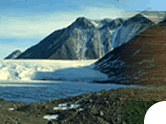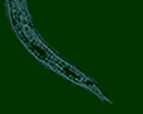Global Litter Invertebrate
Decomposition Experiment
Kakamega Forest,
Kenya
Site Manager
Dr.
Mike Swift
Director, Tropical Soil
Biology Fertility TSBF-CIAT
ICRAF Campus
United Nations Avenue, Gigiri
PO Box 30677, Nairobi
Kenya
Telephone: (+254) 2 524766/55
Fax: (+254) 2 524763
Site Description
Kakamega Forest is generally considered the eastern-most
remnant of the once great equatorial rainforest that stetched
from West Africa through the congo Basin and into East Africa.
It is the only rainforest in Kenya. Thus, Kakamega Forest
is an island of immense biodiversity that has developed along
its own unique evolutionary course for thousands of years
and which shows a high level of endemism. Faunally and florally,
Kakamega is dominated by central African lowland species,
but due to its elevation (predominantly between 1500 m and
1600 m) and proximity to the formerly contiguous Nandi Forests
it also contains highland elements and is thus unique.
Throughout the forest are a series of grassy glades, ranging in size from about
1 to 50 ha, with a few larger clearings. The origins of the glades are uncertain.
Some are certainly recent clearings, but others predate recent records. These
may have originated from past human activity such as cattle grazing or may
be the result of herbivory and movements by large mammals such as buffalo and
elephants (both now extirpated from the region). The glades vary a great deal
in structure, some being open grass and others having a considerable number
of trees or shrubs. A number of streams and small creeks run through the reserve.
The larger creeks are usually bordered by a few to tens of meters of forest
on either side which divide the glades, while the smallest creeks flow through
open grasslands, often forming small marshy patches.
Like many of these forest islands, Kakamega has been shrinking rapidly as human
population growth and resource extraction has increased over the last century.
Although Kakamega Forest is somewhat protected as a government reserve, the
Luhya community who live in areas surrounding the forest still rely heavily
on the forest for basic needs such as fuelwood, charcoal, timber, poles, and
other building materials.
Currently this region is among densely populated rural areas in the world.
The pressure on limited resources of Kakamega Forest will increase, and so
the efforts to manage the forest’s resources in sustainable way will be
crucial to the survival of this vulnerable ecosystem.
Site
Location
The GLIDE experiment for Kenya was conducted at Kakamega
Forest, which abuts the eastern side of Kakamega town in
Western Province of Kenya (see link to Fig
1a). The forest is located between 0† 08_
N to 0† 22_ N and 34† 46_E to 34† 57_
E. The forest lies in Lake Victoria Basin, about 150
km west of the Great African Rift Valley, from which
it is separated by highlands stretching from Cheranganis
in the North to the Mau Escarpment in the South (KIFCON,
1994). To the East it borders North Nandi forest atop
the Nandi Escarpment (at over 2200 m), while it borders
South Nandi forest towards the South-east (Kigomo, 1987).
The forest is accessible from three main roads (see link to Fig
1b): Kaimosi-Chepsanoi or Kapsabet-Chepsonoi road; Kakamega-Kitale
road; and Kakamega-Kapsabet road which also passes through the forest.
Site
Area
Kakamega forest currently measures approximately 19,649
hectares. Of this, dense indigenous forest covers 11,345
ha; semi-dense indigenous forest, 2,705 ha while area under
degraded indigenous cover is negligible. Forest plantations
cover 832 ha, scattered trees and glades cover 1,557 ha,
and cleared or cultivated area cover 2,002 ha (GOK, 1994).
Site
Elevation
Range of altitude is between 1500 and 1600 m above sea
level and up to 2060 m atop a few scattered forested hills
such as Bunyala and Lirhanda.
Annual Rainfall
The Kakamega Forest receives an average of 2080 mm of
rain per year. Rainfall is bimodal with the heaviest
fall in April and May (during the "long rains"), with
a slightly drier June and a second peak of rain roughly
in September to November (the "short rains").
January and February are the driest months.
Annual Temperature
The temperature is fairly constant throughout the year,
with mean daily minimums of about 11†C (52 F) and
mean daily maximums of about 26†C (79 F).
Soil
Soils are generally Acrisols of low fertility, which are
heavily leached, medium to heavy texture clay loams and
clays. These soils are usually acidic with pH below 5.5
(FAO, 1989). The bedrock substrate on which the forest
sits consists of basalt, phenolites, and ancient gneisses.
These rock formations are overlaid by a layer of clay-loam
soils.
Native
Forest/Vegetation Types
Plant communities (forest flora)
No complete floristic studies have been done at Kakamega. The forest hosts
over 300 tree and shrub species, many of Congolean lowland forest affinities,
including a number of endemic plant species, mostly ferns and orchids.
The flora of the open areas and glades has not been well studied. The glades
often have small trees (Combretum molle, Psidium guajava, Maesa lanceolata,
Harungana madagascariensis and Chaetacme aristata). Conspicuous flowering
plants include flame lilies and Gladiolus. The forest edge is lined
by dense thickets of Acanthus pubescens , a shrub with sharply spined,
thistle-like leaves. Marshy patches are dominated by sedges and the grass Echinocloa
pyramidalis.
Several different types of plant communities are found
in Kakamega Forest. In addition to areas classified as "virgin" rain
forest, there are several other classifications including:
colonizing forest, disturbed forest, clearings made for
pit-sawing and charcoal burning, plantation areas (usually
tea), natural glades, swamps, and riverine forest.
Like rainforests elsewhere, the physical structure of Kakamega Forest is
complex, consisting of multiple layers of vegetation. The trees are usually
well buttressed at the base. Also like other rainforests, diversity is high.
There are over 150 documented species of woody trees, shrubs and vines, and
170 species of herbs of which 60 are orchids. Nine of these orchids are endemic
to Kakamega rainforest. In addition, there are 62 species of ferns. This
remarkable diversity results in a forest landscape where trees are festooned
with orchids, mosses, other epiphytes, and lianas (climbers, woody vines).
Gaps in the forest canopy are frequent, which allows for succession and the
maintenance of species diversity.
Other than the information given above, very little is known about the specifics
of the community or ecosystem ecology of Kakamega Forest. In areas around
the GLIDE plots from which litter bag laying was done, the most common plant
species are as shown (see link to table
1).
Forest fauna
The forest is best known for its diversity of birds: 367 species have been
recorded. The avifauna is a mix of lowland and highland species, but lowland
elements dominate. Nine of the species that occur at Kakamega are found nowhere
else in Kenya, and two of its species, Turner's Eremomela (Eremomela turneri)
and Chapins' Flycatcher (Muscicapa lendu), are threatened.
Insects are abundant and some are quite spectacular, such as giant Goliath
beetles (Goliathus goliathus), pink and green African flower mantids
(Pseudocreobotra wahlbergi), and numerous colorful butterflies. Particularly
well represented groups are ants (Formicidae), Lepidopterans, Orthopterans,
and beetles. Gastropod mollusks, millipedes and spiders are also common.
Kakamega is also known for its diverse snake fauna, with over 40 species,
although they can be difficult to find. Lizards are more in evidence, with
various skinks (Mabouya spp.), chameleons (Chamaeleo spp.),
and agamas (Agama spp.) the most common. Amphibians are represented
by a number of anuran species, the most common being Bufo and Phrynobatrachus toads
and Ptychadena (Rana) mascariensis frogs.
Except for the monkeys (Colobus guereza, Cercopithecus mitis, C. ascanius, and Papio
anubis) and squirrels (Protozerus strangeri and Heliosciurus
rufobranchium), large mammals are not much in evidence. Today only smaller
antelope (primarily various duikers) and bush pig (Potamochoerus porcus)
are present. Small carnivores, such as Egyptian mongooses (Herpestes ichneumon),
African civets (Viverra civetta), servals (Felis serval), genets
(Genetta tigrina), and palm civets (Nandinia binotata) are
common; some larger carnivores, including jackals (Canis adustus),
spotted hyaenas (Crocuta crocuta), and leopards (Panthera pardus)
also occur there. Although rodents, insectivores, and bats are clearly present,
they have been little studied at Kakamega.
Challenges and opportunities
This enormous diversity has not been fully studied. Vast numbers of invertebrates,
particularly soil dwelling biota have not been identified. Likewise litter
fall and decomposition experiments have not been carried out at Kakamega
forest. However soil macrofauna studies done were limited to agroecosystems
(Brown et al., 1996). The behavior of the majority of the megafauna is only
minimally understood. Limited soil studies have been conducted with little
to report on. Opportunities for scientific studies are abundant in Kakamega
and are of crucial importance to the conservation of this unique ecosystem.
Principal
Biome/Ecoregion
Biome is tropical rainforest.
Useful References
Brown, G.G., Moreno, A.G. and Lavelle, P.
(1996). Soil macrofauna under different Agricultural Systems and native
vegetation in four countries of East Africa. Biological
Management of Soil Fertility in Small-Scale Farming Systems in Tropical
Africa, 2nd Annual report.
Deshmukh, I. K. 1982. Diversity of understory arthropods in an indigenous
forest and an exotic eucalyptus plantation in western Kenya. Kenya J.
Sci. Tech. Series B Biol. Sci. 3: 3-7.
FAO. (1989). Food and Food Security. FAO forestry paper, FAO (UN),
90: 1-2.
GOK (1994). Kakamega District Development Plan, 1994-1996. Office of the
Vice-President and Ministry of Planning and National Development, Nairobi,
239pp
KIFCON, (1994). Kenya Indigenous Forest Conservation Programme. Kakamega
Forest: The Official Guide. Forest Dept., Nairobi.
Kigomo, B. N. 1987. Some observations on regeneration trials in the Kakamega
and south Nandi natural forests, Kenya. E. Afr. Agric. Forestry J.
52: 184-195.
Kokwaro, J. O. 1988. Conservation status of the Kakamega
Forest in Kenya: The easternmost relic of the equatorial
rain forests of Africa. Monogr. Syst. Bot. Missouri
Bot. Garden 25: 471-489
Mutangah, J. G., O. M. Mwangangi and P. K. Mwaura. 1992. Kakamega Forest
Vegetation Survey. Kenya Indigenous Forest Conservation Programme, National
Museums of Kenya, Nairobi, Kenya.
Rowell, T. 1982. Kakamega Forest. Swara 5: 8-9.
Tsingalia, H. M. 1990. Habitat disturbance severity and patterns of abundance
in Kakamega Forest Western Kenya. Afr. J. Ecol. 28: 213-226.
Photo Gallery
|
GLIDE
Home
What is GLIDE?
Committees
Participants
Study Design
Protocols
Data
2005 Meeting
2003 Meeting
References
Image Gallery
Links
|















